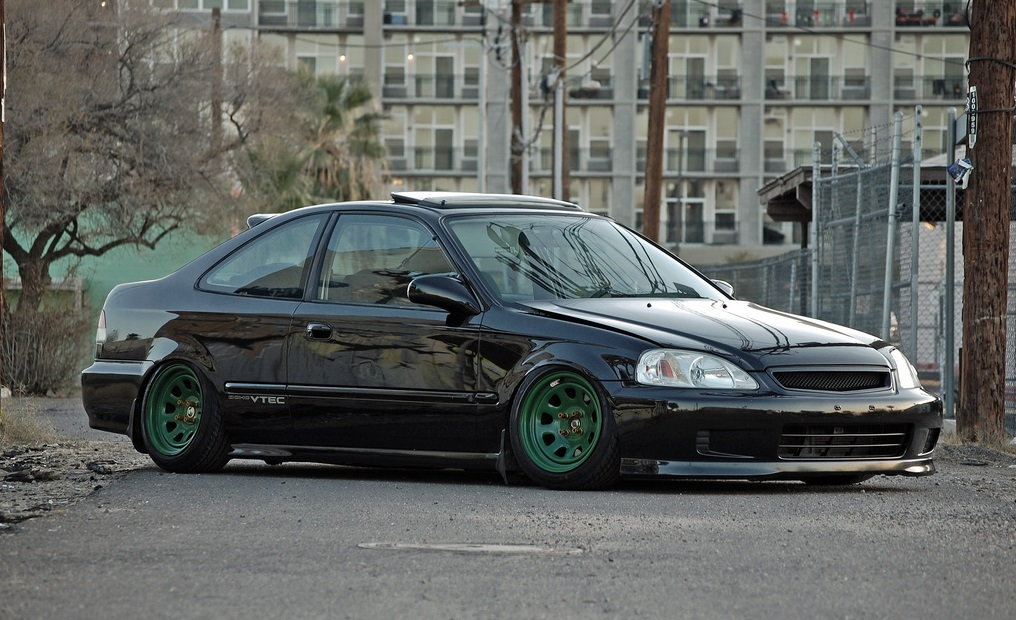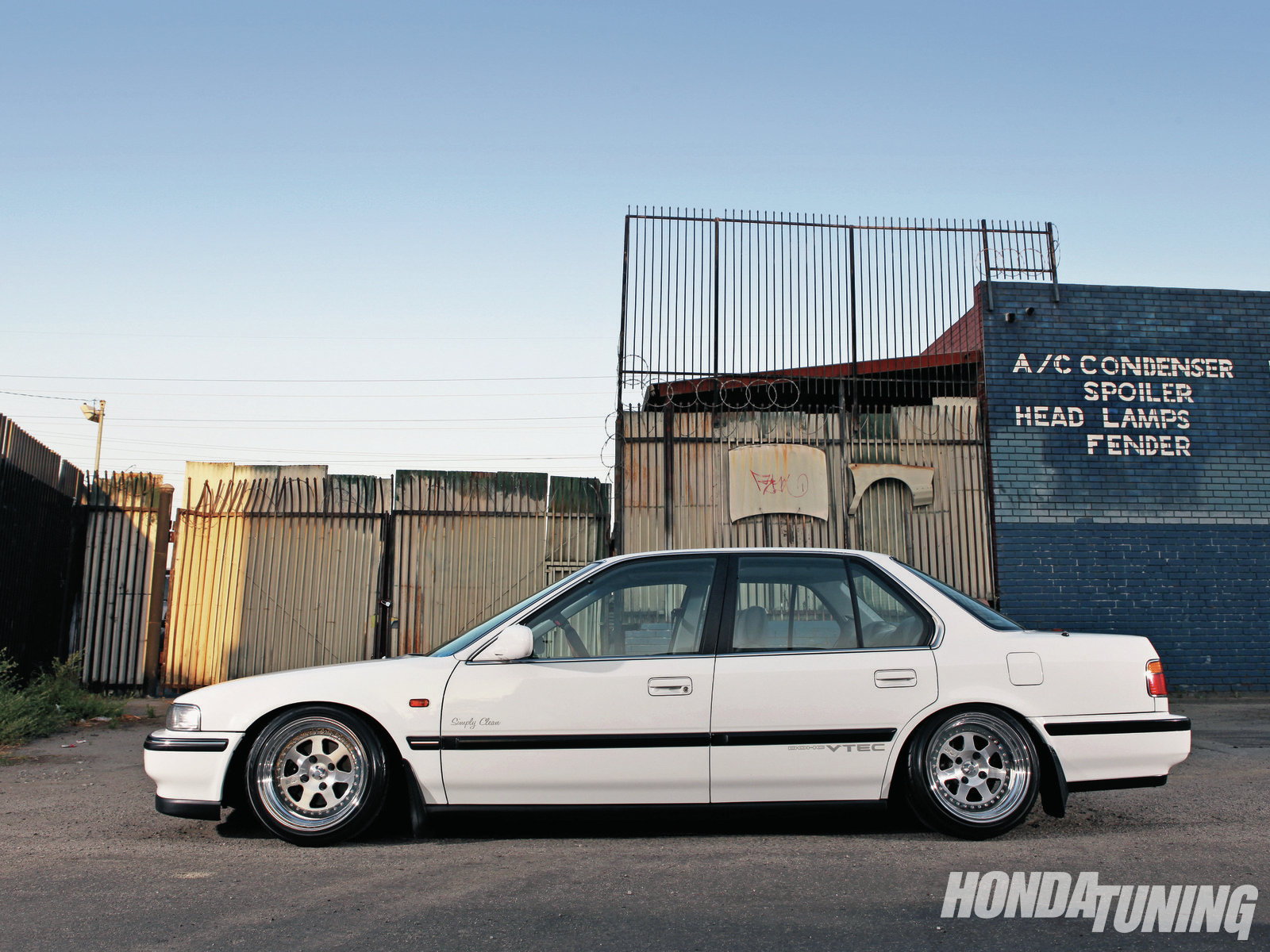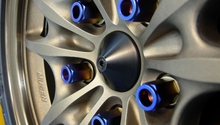Honda Accord: Customizing Your Rims
So you're ready to rid your ride of those boring, stock rims? Here is a rundown of the different types of wheel modifications you can do to your Accord.
This article applies to the Honda Accord (1990-2002).
There's a reason why aftermarket wheels and tires are two of the most popular upgrades on any vehicle's make and model. Looks and performance are some of the common reasons, so an increase in the wheel size on your ride can accomplish both. They can improve handling and allow for bigger calipers, but they are also more susceptible to certain road factors and conditions. So when you decide on which ones you'd like to roll on, you will have to weigh the pros with the cons. Keep reading as this article will cover what you need to know about aftermarket rims and tires.
Rim and Tire Upgrades
While there are a ton of options to upgrade your rims and tires, you can still stuff too much tire under your car and experience rubbing in those tight corners. The maximum size you can stuff under your ride will vary by make and model, but thankfully the internet is your friend. Searching for the ones you want is fun and easy to do, so keep up the research. Eventually, you'll find the rims and tires that match up perfectly with your car.

Rims

DIY Cost – $400-1,500+
Professional Cost – $1,000-2,100+ (includes mounting, balancing, and alignment)
Skill Level – Difficult; replacing the rims with the tires already installed is moderately easy, but mounting, balancing, and aligning the wheels should be done by a professional.
There's more to rims than their looks. Yes, style is a major factor among auto enthusiasts, especially within the Honda community who favor brands like ROTA, Volks, Mugens, or Spoon. However, there's more to it than just style and rarity. All of these brands have a reputation for great quality, so it really boils down to how much you are willing to spend, what you're looking for in performance (on the road or on the track), and what wheel size you choose to go along with them. Lighter rims will enhance your fuel economy, but at a higher cost. In addition, rim sizes affect the number of compatible tire and caliper options allowed. It can be very easy to spend more on a set of rims than what the car is actually worth, which is fine if you plan on keeping it. Just don't expect to get your money back if you ever sell the car with those pricey wheels installed. Recommended for its looks and performance.
Tires

DIY Cost – $400-2,000+
Professional Cost – $1,000-$2,600+ (includes mounting, balancing, and aligning)
Skill Level – Difficult; the tire installation, plus the mounting, balancing, and aligning should be done by a professional.
Tires are literally the only contact between your car and the road, so the right choice can make a big difference in performance and ride quality. Most who go with aftermarket rims prefer to have lower profile tires. One reason is the style of these tires simply look better. Another reason is because they grip better to the road than smaller, lighter, and more narrow tires. In addition, low profile tires allow the vehicle to be closer to the ground, which create a lower center of gravity and improve handling. The caveat to thinner, wider tires is their weight. The heavier the tires are, the less your car will get in fuel economy and the slower your car will accelerate in a straightaway. Comfort will also be reduced, and there will be a greater chance of damage over hazardous roads. With higher profile tires, you would expect the opposite of these advantages and disadvantages. Like rims, the range of pricing between different sized tires varies greatly. The tires you decide on depend on your daily driving conditions, and what you want out of them in regards to performance. Recommended for its ride quality.
(Related Article: High Performance Tire Reviews - Honda-Tech.com)
Large or Small Rims

DIY Cost – Combined cost of rims and tires (shown above)
Professional Cost – $600-1,000 for labor
Skill Level – Difficult; The installation of the rims and tires should be done by a professional. So should the mounting, balancing, and alignment.
As far as pricing goes between larger tires and smaller rims, or larger rims and smaller tires, the larger ones tend to cost more. How much more varies with their different performance ratings and brand.
Larger rims obviously look better, but they can also create the problem of tire rub. If your tires rub each time you turn a corner, this will eventually lead to increased wear on the tires, and be more taxing on the suspension. Small rims allow for the car to be dropped closer to the ground, but they may not handle as well as larger rims. Smaller tires can also undergo tire rub. Whether you go large or small, be positive of your decision. Have a reputable shop adjust your speedometer, or take note of any changes once you swap out the rims and tires. The larger or smaller diameter of wheels can easily throw off your speedometer reading, which can make the guy driving behind you very frustrated. Recommended for its looks.
Related Discussions
- Rare Honda Rims - Honda-Tech.com
- What Tire Size for 1999-2000 Si? - Honda-Tech.com
- Honda Civic Del Sol 15x8 Rims - Honda-Tech.com






